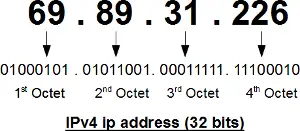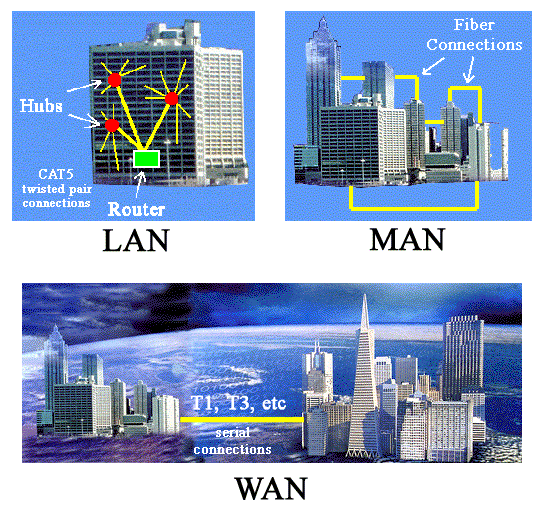IPv4 vs IPv6 – Difference between IPv4 and IPv6
IPv4 stands for Internet Protocol version 4 and similarly IPv6 stands for Internet Protocol version 6. Internet Protocols are technologies which makes us connect our devices to web. IPv4 and IPv6 are the 4th and 6th revision of Internet Protocol technology.
IPv4 addresses are 32-bit length and it could support up to 2^32 IP addresses in total about 4.29 billion addresses. With growth of the Internet and devices it is estimated that the unused IPv4 addresses will eventually run out within some time.
There is inbuilt support of Internet Protocol Security (IPsec) in IPv6 whereas it is limited in IPv4. Apart from this fragmentation is done only by sender in IPv6 and incase of IPv4 it is done by both sender and forwarding routers.
IPv6 advances IPv4 with availability of Packet Flow Identification in IPv6 header in the Flow Label field which is absent in IPv4. Configuration of the IPv4 addresses are done either in Static (Manual) configuration OR Dynamic (DHCP) configuration mode. Auto-configuration of addresses are done in IPv6.
Multicast Group Membership is managed by Internet Group Management Protocol (IGMP) in IPv4 while it is done by Multicast Listener Discovery (MLD) messages in IPv6. Broadcast messages were present in IPv4 and absent in IPv6.
IPv4 vs IPv6 – Difference between IPv4 and IPv6
|
IPv4
|
IPv6
|
|
Introduced in 1981.
|
Introduced in 1999.
|
|
They are 32 bit addresses. They are represented in decimals.
|
They are 128 bit addresses. They are represented in hexadecimals.
|
|
Decimal Notation
Example: 192.168.10.1 |
Hexadecimal Notation
Example:2003:1CA7:0325:AB10:0321:7654:9810:DCAB
|
|
Header length is variable.
|
Header length is fixed.
|
|
In total, there could be about 4.29 billion addresses
|
In total, there could be about 3.4×10^38 addresses
|
|
Security features are optional.
|
Internet Protocol Security (IPsec) is inbuilt feature of IPv6.
|
|
Checksum field and Options fields are present in IPv4 header
|
Checksum field and Options fields are absent in IPv6 Header
|
|
Both Sender and Forwarding Routers perform Fragmentation.
|
Only the Sender performs Fragmentation.
|
|
IPv4 addresses are mapped to MAC Addresses using Address Resolution Protocol (ARP)
|
Here, Neighbor Discovery Protocol (NDP) is used instead of ARP.
|
|
Packet Flow Identification is absent.
|
Packet Flow Identification is present in the IPv6 header.
|
|
Configuration is done either in Manual (Static) or Dynamic (DHCP) mode.
|
Auto-Configuration of addresses are done.
|
|
Broadcast messages are present.
|
Broadcast messages are absent.
|
Thus, we conclude that IPv6 has many advancements over the previous generation IPv4 and should be replaced by it.









